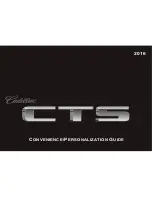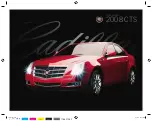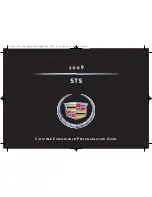
Driving Your Vehicle
6-22
• The advanced wet-clutch dual clutch
transmission in your vehicle can be
thought of as an automatically shifting
manual transmission. It gives the
driving feel of a manual transmission,
yet provides the ease of a fully
automatic transmission.
• When D (Drive) is selected, the
transmission will automatically
shift through the gears similar to a
conventional automatic transmission.
With a wet-type dual clutch
transmission, however, the engine
torque that is transmitted directly
from the engine to the transmission
is transferred by a clutch pack that
is lubricated in oil. The oil's primary
purpose is to cool the clutch, and
because of lubricating properties of
the oil and this cooling effect, gear
shifts are smooth as well as direct.
• The wet-type dual clutch transmission
allows for better acceleration
performance and increased fuel
efficiency while driving. But it differs
from a conventional automatic
transmission because it does not
incorporate a torque converter.
Instead, the transition from one gear
to the next is managed by clutch slip,
especially at lower speeds.
As a result, shifts are sometimes more
noticeable, and a light vibration can
be felt as the transmission shaft speed
is matched with the engine shaft
speed. This is a normal condition of
the dual clutch transmission.
• The wet-type clutch transfers torque
more directly and provides a direct
drive feeling which may feel different
from a conventional automatic
transmission. This may be more
noticeable when launching the vehicle
from a stop or when traveling at low,
stop-and-go vehicle speeds.
• When rapidly accelerating from a
lower vehicle speed, the engine
rpm may increase dramatically as a
result of clutch slip as the dual clutch
transmission selects the correct gear.
This is a normal condition.
• When accelerating from a stop on
an incline, press the accelerator
smoothly and gradually to avoid any
shudder feeling or jerkiness.
• When traveling at a lower vehicle
speed, if you release the accelerator
pedal quickly, you may feel engine
braking before the transmission
changes gears. This engine braking
feeling is similar to operating a
manual transmission at low speed.
• When driving downhill, you may
wish to move the gear shift lever to
Manual Shift mode and downshift to
a lower gear in order to control your
speed without using the brake pedal
excessively.
• When you turn the engine on and off,
you may hear clicking sounds as the
system goes through a self-test. This
is a normal sound for the dual clutch
transmission.
• During the first 1000 miles (1,500km),
you may feel that the vehicle may not
be smooth when accelerating at low
speed. During this break-in period, the
shift quality and performance of your
new vehicle is continuously optimized.
Summary of Contents for Santa Cruz 2022
Page 30: ......
Page 94: ......
Page 187: ...05 5 51 HomeLink 5 Programing Flow Chart OOS040475N OOS040475N...
Page 274: ......
Page 352: ......
Page 484: ......
Page 585: ...I Index Index...
Page 598: ......
















































